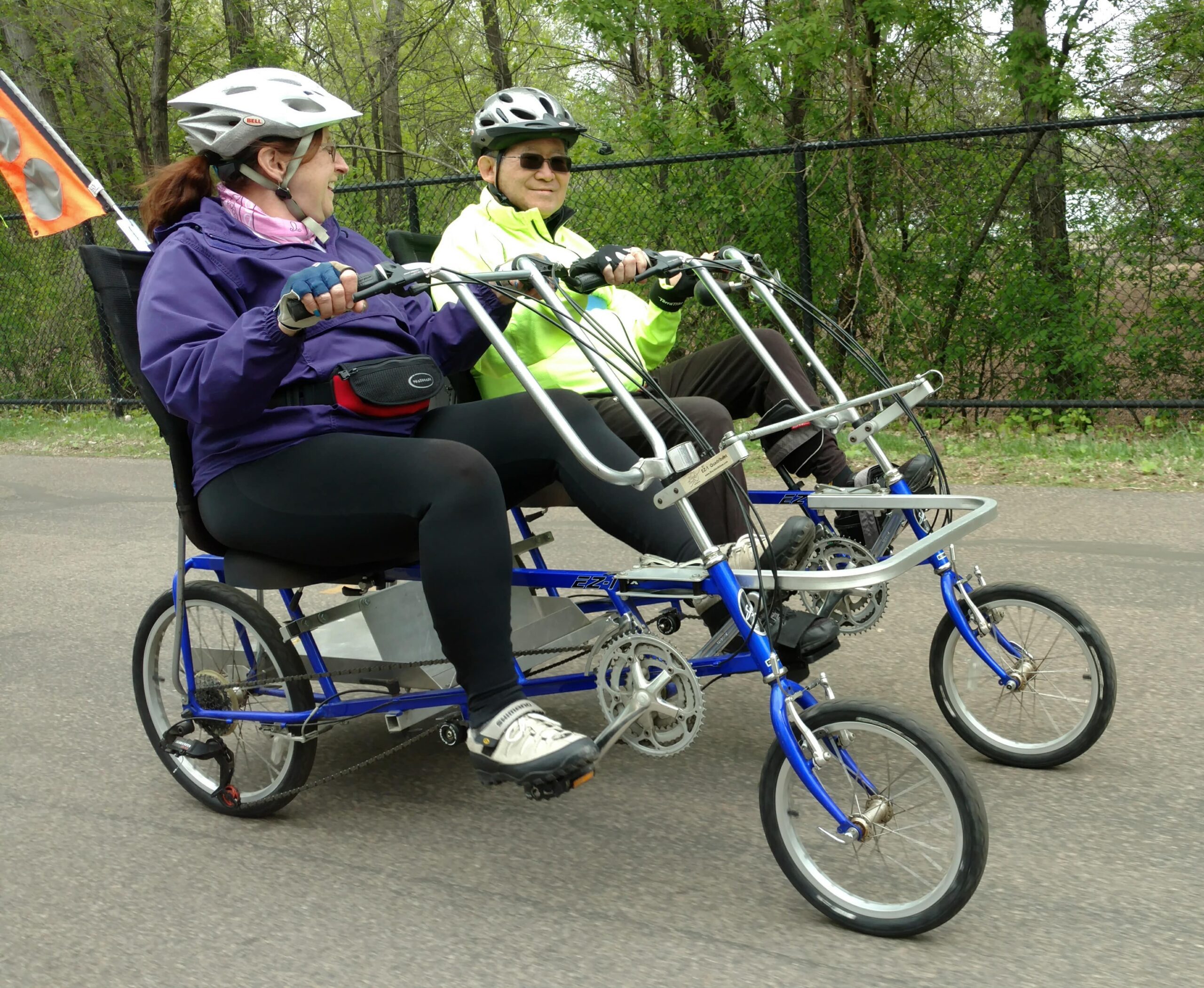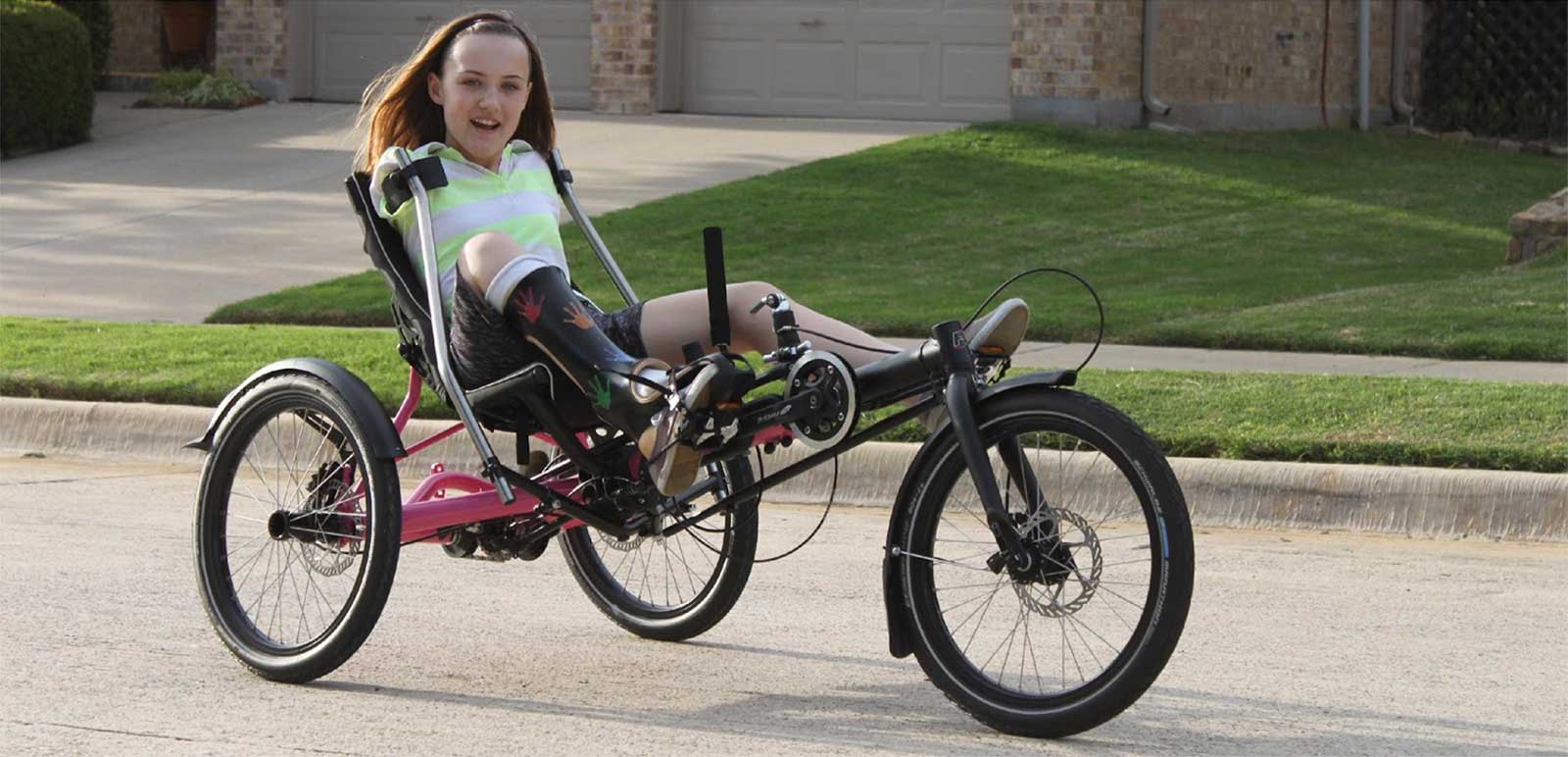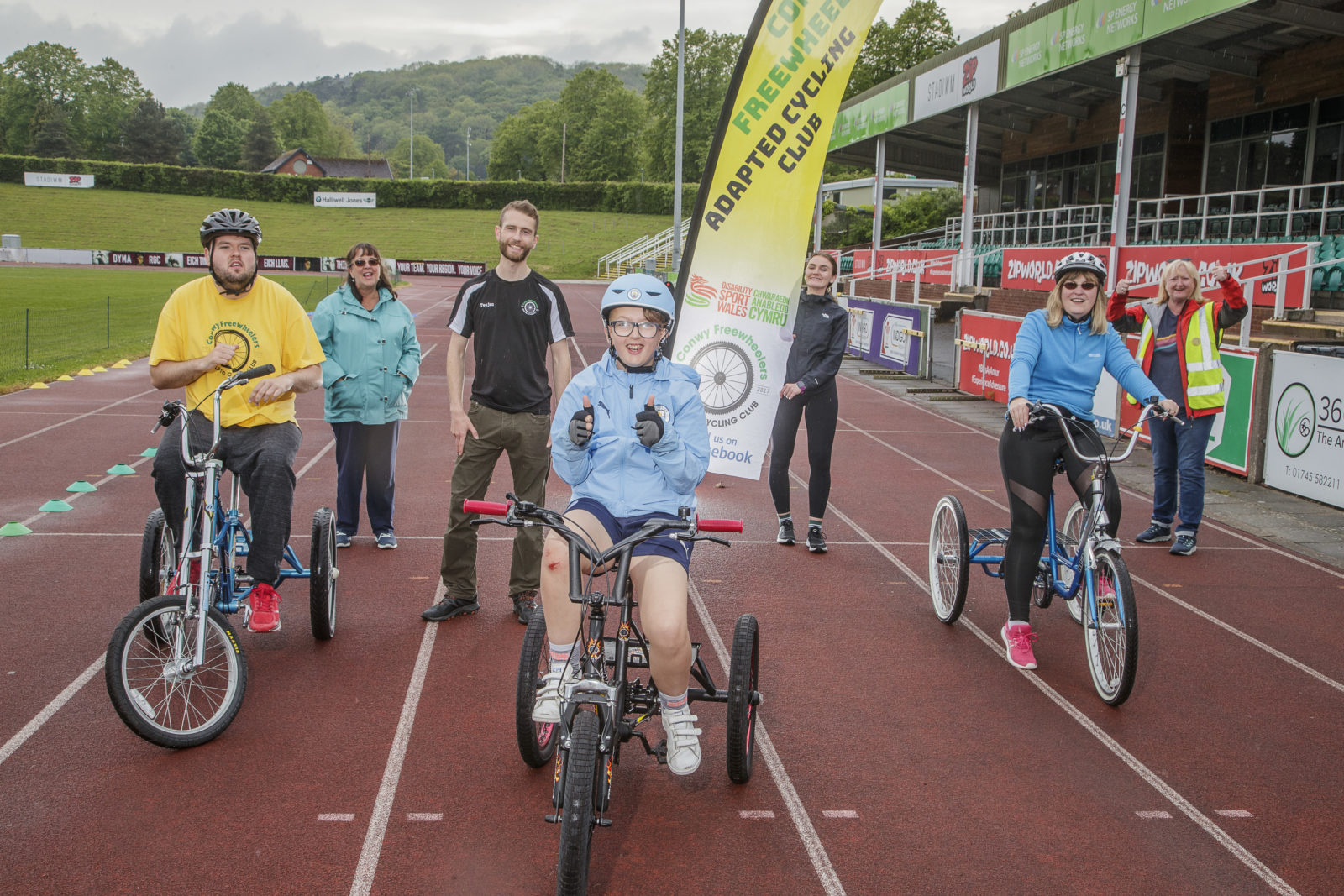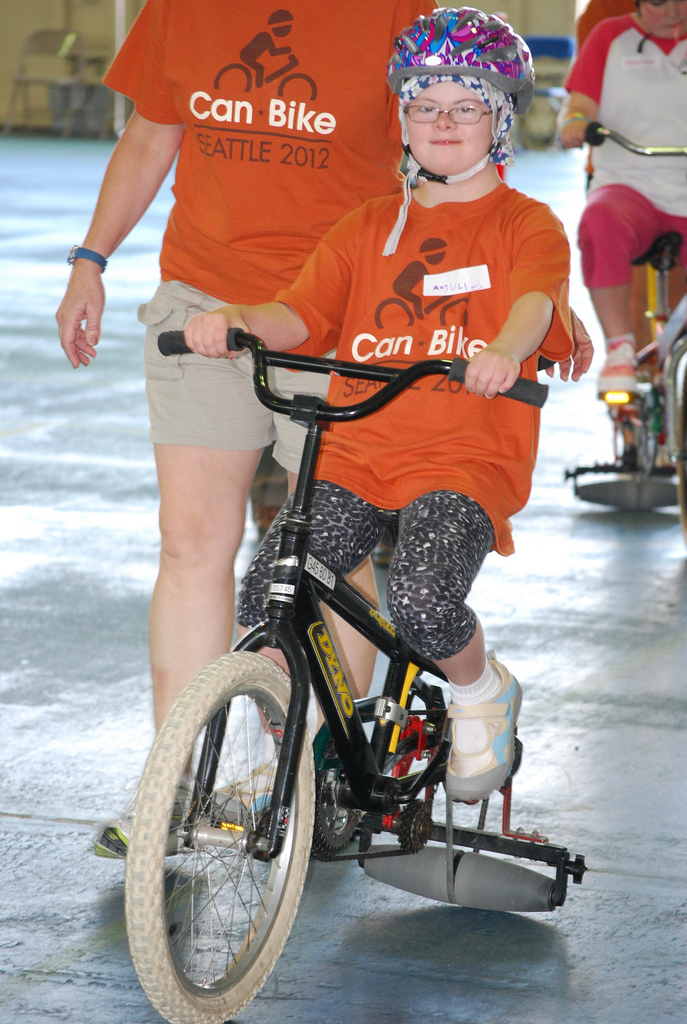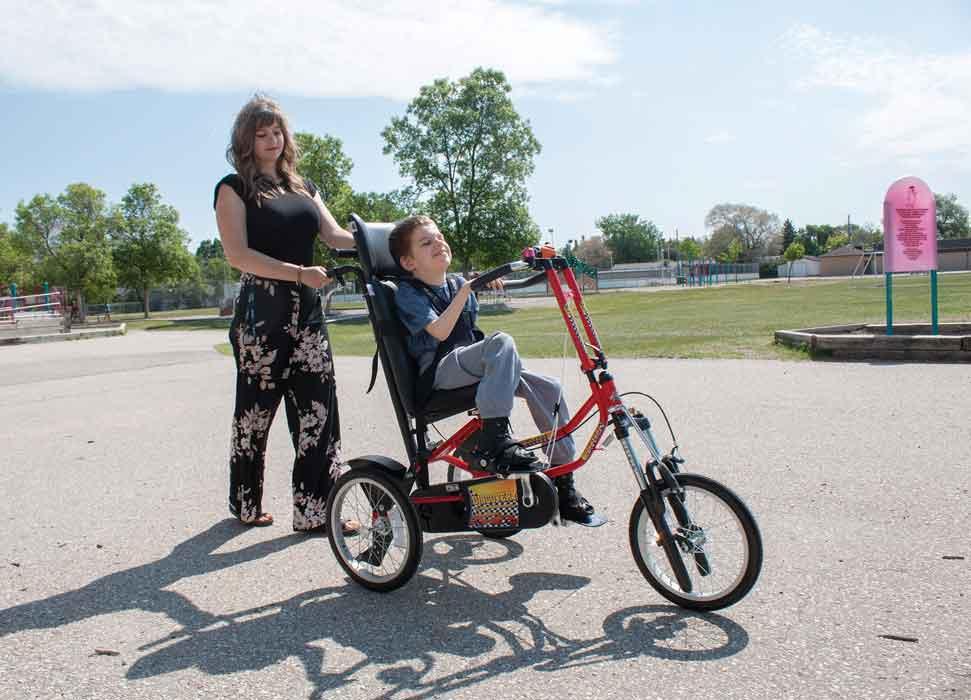Breaking Down Barriers: How Adaptive Bicycles Can Enhance Mobility and Independence
Cycling is a universal language that can bring people together, promote physical activity, and foster a sense of community. However, for individuals with disabilities, accessing this world can be a significant challenge. Traditional bicycles often fail to cater to the diverse needs of people with disabilities, limiting their ability to participate in this popular activity. This is where
Choosing the Right Adaptive Bicycle: A Guide for Riders with Disabilities
When it comes to selecting an adaptive bicycle, the options can be overwhelming. With a wide range of models and features available, it’s essential to consider individual needs and preferences to find the perfect bike. For riders with disabilities, the right adaptive bicycle can make all the difference in terms of comfort, stability, and accessibility.
One of the most critical factors to consider is the type of adaptive bicycle. Hand cycles, recumbent bikes, and trikes are popular options, each catering to specific needs and abilities. Hand cycles, for example, are ideal for riders with limited or no leg function, allowing them to propel the bike using their arms. Recumbent bikes, on the other hand, provide a comfortable and stable riding position, making them suitable for riders with back or neck problems.
Trikes offer enhanced stability and support, making them perfect for riders who require additional balance and control. These three-wheeled bikes are also ideal for riders who need to carry oxygen tanks, ventilators, or other medical equipment. When choosing an adaptive bicycle, it’s essential to consider the rider’s specific needs and abilities to ensure the best possible fit.
In addition to the type of adaptive bicycle, there are several key features to consider. Comfort is a top priority, and riders should look for bikes with adjustable seats, handlebars, and pedals. Stability is also crucial, and features like wide tires, low centers of gravity, and anti-tip systems can provide added peace of mind.
Accessibility is another vital consideration. Riders should look for bikes with easy-to-use controls, simple gearing systems, and adjustable components. Some adaptive bicycles also feature specialized accessories, such as wheelchair ramps or transfer stations, to facilitate easy mounting and dismounting.
When selecting an adaptive bicycle, riders should also consider their lifestyle and riding habits. For example, riders who plan to use their bike for commuting may prioritize features like storage capacity, lighting systems, and fenders. Riders who plan to use their bike for recreational purposes may prioritize features like comfort, stability, and maneuverability.
Ultimately, the right adaptive bicycle can empower riders with disabilities to experience the freedom and joy of cycling. By considering individual needs and preferences, riders can find a bike that meets their unique requirements and provides a comfortable, stable, and accessible riding experience.
How to Find the Perfect Fit: Tips for Test Riding an Adaptive Bicycle
Test riding an adaptive bicycle is a crucial step in finding the perfect fit. It’s essential to ensure that the bike meets individual needs and preferences, providing a comfortable and stable riding experience. When test riding an adaptive bicycle, there are several key factors to consider.
Comfort is a top priority, and riders should look for bikes with adjustable seats, handlebars, and pedals. A comfortable riding position can make all the difference in terms of enjoyment and accessibility. Riders should also consider the bike’s ergonomics, ensuring that the controls are easy to use and the riding position is natural and intuitive.
Maneuverability is another critical factor to consider. Riders should test the bike’s handling and responsiveness, ensuring that it can navigate tight spaces and respond to commands. This is particularly important for riders with mobility or balance impairments, who may require a bike that is highly maneuverable and responsive.
When test riding an adaptive bicycle, riders should also consider the bike’s accessibility features. For example, some bikes may have wheelchair ramps or transfer stations, which can facilitate easy mounting and dismounting. Others may have specialized controls or accessories, such as joystick controls or oxygen tank holders.
To ensure a successful test ride, riders should prepare ahead of time. This may involve researching different models and features, reading reviews and testimonials, and consulting with adaptive bicycle specialists. Riders should also wear comfortable clothing and shoes, and bring any necessary accessories or equipment.
During the test ride, riders should pay attention to how the bike feels and responds. They should test the bike’s controls, brakes, and gears, and ensure that the riding position is comfortable and natural. Riders should also consider the bike’s safety features, such as reflectors, lights, and mirrors.
After the test ride, riders should take the time to reflect on their experience. They should consider the bike’s pros and cons, and weigh the benefits and drawbacks of each model. By taking the time to carefully evaluate and compare different adaptive bicycles, riders can find the perfect fit and enjoy a safe and enjoyable cycling experience.
Ultimately, finding the perfect fit is crucial for riders with disabilities. By test riding different adaptive bicycles and considering individual needs and preferences, riders can find a bike that provides a comfortable, stable, and accessible riding experience. Whether you’re a seasoned cyclist or just starting out, the right adaptive bicycle can empower you to enjoy the freedom and joy of cycling.
Top Picks for Adaptive Bicycles: Reviews of the Best Models for Riders with Disabilities
When it comes to choosing an adaptive bicycle, there are many options available. To help riders with disabilities make an informed decision, we’ve reviewed and compared some of the top models on the market. Here are our top picks for adaptive bicycles, including their features, benefits, and pricing.
The Top End Force RX is a high-performance hand cycle designed for riders with mobility impairments. This bike features a lightweight aluminum frame, adjustable seating, and a powerful drivetrain. With a price tag of around $2,500, the Top End Force RX is a great option for riders who want a high-quality, customizable hand cycle.
The Catrike Road is a popular recumbent bike designed for riders with back or neck problems. This bike features a comfortable, ergonomic design, adjustable seating, and a smooth, quiet ride. With a price tag of around $2,000, the Catrike Road is a great option for riders who want a comfortable, easy-to-use recumbent bike.
The Sunrise Medical Quickie Shark is a versatile, high-performance trike designed for riders with mobility impairments. This bike features a lightweight, adjustable frame, a powerful drivetrain, and a range of customizable options. With a price tag of around $3,000, the Sunrise Medical Quickie Shark is a great option for riders who want a high-quality, customizable trike.
Other notable mentions include the Invacare Top End Force 3, the Catrike 700, and the HP Velotechnik Scorpion. These bikes offer a range of features, benefits, and pricing options, making them great choices for riders with different needs and preferences.
When choosing an adaptive bicycle, it’s essential to consider individual needs and preferences. Riders should think about their riding style, terrain, and goals, as well as their budget and any specific requirements they may have. By doing their research and test riding different models, riders can find the perfect adaptive bicycle to meet their needs and enhance their cycling experience.
In addition to the models mentioned above, there are many other adaptive bicycles available on the market. Riders can find a range of options by visiting local bike shops, attending cycling events, or searching online. By exploring different models and features, riders can find the perfect adaptive bicycle to suit their needs and preferences.
Customizing Your Ride: Accessories and Modifications for Adaptive Bicycles
Adaptive bicycles are designed to provide a comfortable and accessible riding experience for people with disabilities. However, every rider is unique, and what works for one person may not work for another. That’s why customizing your ride with accessories and modifications can make a big difference in terms of comfort, safety, and performance.
One of the most important accessories for adaptive bicycles is seating. A comfortable seat can make all the difference in terms of ride quality and accessibility. There are many different types of seats available, including gel seats, foam seats, and adjustable seats. Riders can also consider adding seat cushions or backrests for extra support and comfort.
Handlebars are another important consideration for adaptive bicycles. Riders can choose from a range of handlebar styles, including upright handlebars, drop handlebars, and ergonomic handlebars. Some handlebars also feature adjustable height and angle, allowing riders to customize their riding position.
Braking systems are also critical for adaptive bicycles. Riders can choose from a range of braking systems, including hand brakes, foot brakes, and electronic brakes. Some adaptive bicycles also feature advanced braking systems, such as regenerative braking or anti-lock braking.
In addition to these accessories, riders can also consider modifying their adaptive bicycle to suit their needs. For example, riders can add a wheelchair ramp or transfer station to make it easier to get on and off the bike. Others can add a basket or storage compartment to carry gear or supplies.
When customizing an adaptive bicycle, it’s essential to consider the rider’s specific needs and preferences. Riders should think about their riding style, terrain, and goals, as well as any specific requirements they may have. By working with a professional bike fitter or adaptive bicycle specialist, riders can create a customized ride that meets their unique needs and enhances their cycling experience.
Customizing an adaptive bicycle can also enhance safety and performance. For example, adding a mirror or blind spot detector can improve visibility and reduce the risk of accidents. Others can add a GPS system or fitness tracker to monitor progress and stay motivated.
Overall, customizing an adaptive bicycle can make a big difference in terms of comfort, safety, and performance. By considering the rider’s specific needs and preferences, and working with a professional bike fitter or adaptive bicycle specialist, riders can create a customized ride that enhances their cycling experience and promotes independence and mobility.
Overcoming Obstacles: Tips for Riding an Adaptive Bicycle in Challenging Terrain
Riding an adaptive bicycle can be a liberating experience, but it can also present unique challenges, especially when navigating difficult terrain. Hills, rough roads, and inclement weather can be daunting obstacles for riders with disabilities, but with the right skills and preparation, they can be overcome.
One of the most important things to consider when riding an adaptive bicycle in challenging terrain is confidence. Riders need to feel confident in their ability to navigate obstacles and handle their bike in different conditions. This can be achieved through practice and experience, as well as by taking lessons or workshops to learn new skills.
Another key factor is skill-building. Riders need to develop the skills and techniques necessary to navigate challenging terrain, such as hills and rough roads. This can include learning how to use different gears, how to brake effectively, and how to maintain balance and control.
Preparation is also essential when riding an adaptive bicycle in challenging terrain. Riders should always check the weather forecast and road conditions before heading out, and plan their route accordingly. They should also make sure their bike is in good working order, with proper tire pressure, functioning brakes, and a clean chain.
In addition to these general tips, there are also specific strategies that riders can use to overcome obstacles in challenging terrain. For example, when riding uphill, riders can use a lower gear to maintain a steady pace and avoid burning out. When riding on rough roads, riders can use a bike with suspension or a comfortable seat to reduce the impact of bumps and vibrations.
Inclement weather can also be a challenge for riders with disabilities, but there are ways to overcome it. For example, riders can use a bike with fenders or a rain cover to stay dry in wet weather, or a bike with lights or reflectors to increase visibility in low light conditions.
Overall, riding an adaptive bicycle in challenging terrain requires a combination of confidence, skill-building, and preparation. By developing the necessary skills and strategies, riders with disabilities can overcome obstacles and enjoy the freedom and independence of cycling.
It’s also important to note that many adaptive bicycles are designed to handle challenging terrain, with features such as wide tires, sturdy frames, and advanced braking systems. Riders should research and test different models to find the one that best meets their needs and preferences.
By following these tips and strategies, riders with disabilities can overcome obstacles and enjoy the many benefits of cycling, including improved physical fitness, increased mobility, and enhanced mental well-being.
Joining the Cycling Community: Resources and Support for Riders with Disabilities
Riding a bicycle can be a liberating experience, but it can also be intimidating, especially for riders with disabilities. Connecting with others who share similar experiences and interests can be a great way to build confidence, learn new skills, and stay motivated.
There are many organizations, online forums, and local cycling groups that cater to riders with disabilities. These resources can provide valuable information, support, and community for riders who may be new to cycling or looking to improve their skills.
One example is the National Organization on Disability (NOD), which offers a range of resources and programs for riders with disabilities, including adaptive bicycle rentals and cycling lessons. Another example is the Disabled Sports USA (DSUSA) organization, which provides adaptive sports programs, including cycling, for riders with disabilities.
Online forums and social media groups can also be a great way to connect with other riders with disabilities. These platforms can provide a space to share experiences, ask questions, and learn from others who have similar interests and challenges.
Local cycling groups can also be a great resource for riders with disabilities. Many cities have cycling groups that cater to riders with disabilities, offering adaptive bicycle rentals, cycling lessons, and group rides. These groups can provide a sense of community and support, as well as opportunities to learn new skills and improve cycling abilities.
Connecting with others who share similar experiences and interests can be a powerful way to build confidence and stay motivated. By joining the cycling community, riders with disabilities can find support, resources, and a sense of belonging that can enhance their overall cycling experience.
In addition to these resources, there are also many adaptive bicycle manufacturers and retailers that offer support and resources for riders with disabilities. These companies often have experienced staff who can provide guidance on selecting the right adaptive bicycle, as well as offer maintenance and repair services.
Overall, joining the cycling community can be a great way for riders with disabilities to connect with others, build confidence, and improve their cycling abilities. By taking advantage of these resources and support, riders can enhance their overall cycling experience and enjoy the many benefits of cycling.
Empowering a More Inclusive Cycling Culture: The Future of Adaptive Bicycles
The demand for adaptive bicycles is growing, and it’s essential to promote inclusivity in the cycling community. Adaptive bicycles have the potential to empower people with disabilities, providing them with the freedom to ride and enjoy the outdoors.
As the cycling industry continues to evolve, we can expect to see more innovative and inclusive designs. Manufacturers are already developing adaptive bicycles with advanced features, such as adjustable seats, ergonomic handlebars, and customizable braking systems.
One potential future development is the integration of technology into adaptive bicycles. For example, some manufacturers are exploring the use of artificial intelligence and machine learning to create adaptive bicycles that can adjust to a rider’s needs in real-time.
Another potential development is the creation of more accessible and affordable adaptive bicycles. Many adaptive bicycles are currently priced out of reach for many people with disabilities, but manufacturers are working to create more affordable options without sacrificing quality or performance.
In addition to these developments, there is also a growing recognition of the importance of inclusivity in the cycling community. Many cycling organizations and advocacy groups are working to promote inclusivity and accessibility, and to create a more welcoming environment for riders of all abilities.
Overall, the future of adaptive bicycles is bright, and it’s essential to continue promoting inclusivity and accessibility in the cycling community. By working together, we can create a more inclusive and empowering cycling culture that benefits everyone.
As the demand for adaptive bicycles continues to grow, it’s essential to prioritize inclusivity and accessibility in the cycling community. By promoting adaptive bicycles and creating a more welcoming environment for riders of all abilities, we can empower people with disabilities and create a more inclusive cycling culture.
The future of adaptive bicycles is full of possibilities, and it’s essential to continue innovating and pushing the boundaries of what is possible. By working together, we can create a more inclusive and empowering cycling culture that benefits everyone.




